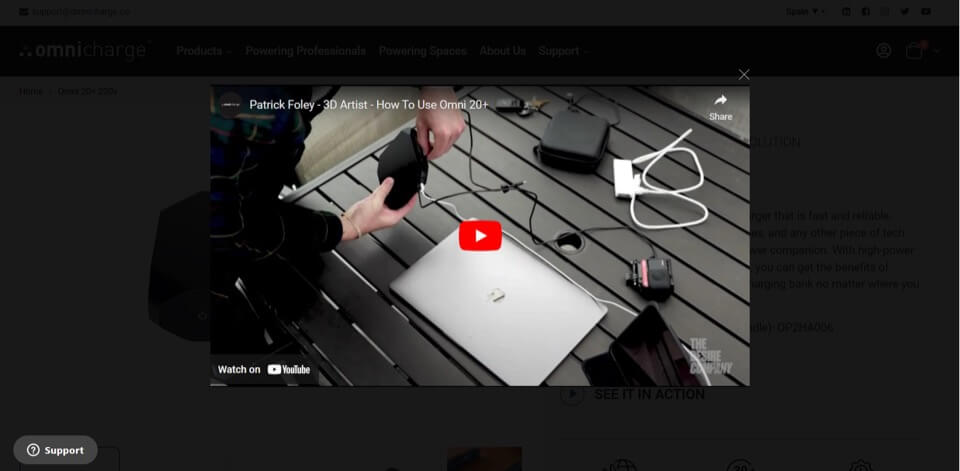
Since it was launched in 2006, Shopify has become ubiquitous as an ecommerce platform. Some 6.4 million websites are hosted on Shopify, and it’s the top choice for businesses looking to quickly set up an online storefront. Even big global brands such as Pepsi, Unilever, and Nestle are using it.
Shopify’s biggest strength is the ease of setting up an online store. It saves you money and time in getting your products out to market and establishing a revenue stream quickly. However, given the popularity of Shopify, businesses may well feel that this competitive advantage isn’t what it used to be.
Implementing quality SEO is an excellent way to retain your competitive edge and get more customers on Shopify. Here’s how to boost organic traffic and improve sales on your store without resorting to paid ads.
Why Is SEO Crucial on Shopify?
For starters, SEO is excellent for user engagement, both on search and social platforms. For instance, the first organic search result on Google has an average clickthrough rate (CTR) of 28.5%, whereas the average CTR on paid search ads is about 2%.
What’s more, since you don’t have to pay for every click you generate, it’s also a more sustainable way to get more Shopify customers and sales in the long run. And, even if you are running paid ads, SEO can complement your PPC campaign by improving your domain authority and therefore your bid price when setting up your Google Ads campaigns.
However, the biggest reason you should pay extra attention to this is that Shopify has certain limitations when it comes to SEO, including URL structure, technical optimizations, and duplicate content.
These can easily be remedied with the right technical know-how and implementation. Doing so will help you compete effectively with non-Shopify businesses and outperform those on Shopify who aren’t as SEO-savvy.
If you’d like professional help in setting up an outstanding Shopify store or getting more sales from your existing one, reach out to us today.
How to Improve SEO to Get More Customers on Shopify
- Keyword Research
It’s difficult to overstate the importance of keyword strategy. Keywords are the foundation of SEO copywriting. Ideally, keyword research should inform all of your SEO efforts and influence subsequent steps, including content creation, backlinking, and even paid campaigns.
The keywords embedded into your web copy indicate to Google which search queries you want to rank for. For instance, if you’re a Shopify apparel retailer, you’ll want to choose, through your keywords, what kinds of clothing you want to rank for. You could stock clothing for men, women, or kids, formal or casual, fast fashion or sustainable items, and so on.
Something like kids shoes is a “seed term.” All relevant category and product pages should build from this phrase. It seems simple enough, but many store owners make the mistake of getting too creative. Adorable footwear for little ones will perform worse than boys and girls kids shoes sizes 6-13.
Also, consider user intent when you’re selecting your keywords. For instance, if you just happen to Google “business casuals for men,” you’re going to get a litany of style guides and articles advising men on how to dress in business casuals. Unless you’ve set up a Shopify site to run a style blog — unlikely — you’ll want to customize the keyword to include buyer intent.
Embedding something specific like “buy business casuals for men,” “affordable business casuals for men,” or “buy Tommy Hilfiger online” is a better way to get more customers on your Shopify site rather than idle viewers who aren’t looking to buy. Compare these search engine results pages (SERPs) and notice how the change in keyword brings up a purchase intent:

Ultimately, a good keyword strategy is a mix of technical skills, research, and a grasp of human psychology to try and define the intent behind a search query.
Finally, ensure you’re hitting a keyword density of about 1% for every web page — that is one instance of your keyword every hundred words or so. There’s nothing magical about 1%, but this is a good rule of thumb to avoid keyword stuffing, a practice that Google’s webmaster guidelines specifically advise against.
- Unique Content
The next step to getting more customers on Shopify with SEO is to churn out unique content periodically.
Content is important because it’s how you engage with your customers and a delivery vehicle for your keywords. Your product and category pages are bound to have keywords embedded. It’s a good idea to supplement this with a blog.
Regular blogging gives you more chances to feature keywords and improve your website’s domain authority. You can also link to relevant products in a blog as you’re talking about them, which is an excellent way to get more customers and sales on your Shopify store.
Crucially, ensure your content is unique. Uploading plagiarized content will see your ranking and domain authority tank faster than you can stop it.
Incidentally, duplicate content is one of the most common SEO issues on Shopify. Often, when you sort products by their tags (e.g. /collections/mens-shirts/short-sleeves, /collections/mens-shorts-long-sleeves, etc.), Shopify will create multiple URLs with duplicate content, which you want to avoid in order to get more customers on your site.

What’s more, these tagged pages aren’t easy to optimize for SEO. If you want to add unique content to each of these pages, you can do so by downloading a special app or by editing the Shopify theme. Alternatively, you can de-index those pages so that Google doesn’t crawl them, again by editing the theme.
This kind of proactive page management is much easier when you’re partnered with Shopify SEO experts who can conduct regular technical analyses of your site.
- User Experience
Excellent user experience is the best way to get more customers to stay on your Shopify site and generate sales. And while user experience is quite broad, there are a few things you should absolutely sort out.
Web design and device optimization are top of the list. Your web pages and on-site navigation ought to be arranged intuitively so that it’s easy for a visitor to find what they need and close a purchase.
A complete and well-structured sitemap will help customers navigate your site better. It’ll also make it easier for Google to crawl and index each page so that you’re getting full value for your SEO efforts. Ensure you submit your sitemap to Google Search Console (so that your site is crawled) and fix any site coverage issues (like 404 errors).
Other things that influence user experience include intrusive elements like pop-ups and page load times. In fact, if your page takes longer than three seconds to load, people are likely to leave.
Bear in mind that UX affects not just how many customers convert on your Shopify site, but also how many more you can get to visit it in the first place. This is because UX elements either directly or indirectly affect SEO performance. If your on-page bounce rate is too high or your dwell time is too low, indicating an unsatisfactory user experience, Google tends to rank you lower.
- On-Site Engagement

Incorporating videos, interactive content, and multimedia options into your pages is a great way to improve UX and on-site engagement and get more customers on your Shopify platform.
People would much rather see how a product looks or works in action than read about it. Images show your viewers exactly what a product looks like and sets expectations ahead of the purchase. Videos can help walk them through how your product works and showcase its benefits. In fact, including videos can increase the amount of time users spend on a web page by up to 88%.
You can even choose to integrate Shopify products with a YouTube channel, either to promote your own merch as a creator or to get more affiliate sales on Shopify.
Consider mixing it up with things like 360° videos, AR- and VR-enabled media, and interactive elements on the page. The more time that viewers spend on your Shopify site, the higher Google is likely to rank it, which makes it easier for you to get more customers in the future.
- Linking Strategy
Internal linking is a big part of getting more customers to quickly find relevant products and categories on Shopify. It massively affects Shopify SEO and is a relatively low-cost technique.
When you create a category or subcategory page, include a little copy with links to some of the most popular products featured on that page as well as other relevant categories. Link back to category pages both on your product pages as well as articles on your blog.
Ensure that the anchor text — the keyword carrying the hyperlink — is relevant to the page it’s linking to. This is a good way to carry semantic relevance and link equity back to those pages.
Don’t ignore off-site link building either. Relevant links from high-authority pages will not only get you more customers on Shopify from the host sites, but they will also contribute toward improved SEO for your site.
Work With An Expert
There’s a lot that goes into creating a high-ranking ecommerce website on a proprietary platform like Shopify. Simple mistakes like choosing the wrong theme or a poor keyword strategy can set you up for a rough time right at the outset.
At Coalition Technologies, we offer industry-leading Shopify services that deliver a well-designed, high-performing website. Browse our work or reach out to us for a free consultation on how to get more customers and sales on your Shopify store.


